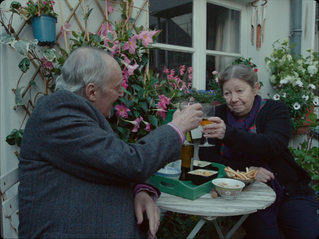The Skin I Live In
- Isobel Wise
- Sep 30, 2020
- 2 min read
Updated: Apr 4, 2021

Revelling in a space that conflates horror with the surreal and sensual, Pedro Almodóvar’s The Skin I Live In is a film that seduces its audience just as much as it provokes them. Set within the sprawling and secluded estate of plastic surgeon Robert (Antonio Banderas), the audience is introduced to Vera (Elena Anaya): his patient, prisoner and obsession. Driven by heartache and seeking vengeance, Robert imprisons Vera in a room, devoting his time to the creation of an artificial skin that will leave her fireproof and free of imperfection. Banderas is formidable in the role, balancing malevolence with elegant, debonair charm. Anaya is equally captivating. In their interactions, desire is met fiercely with rage, philanthropy twisted by masochism, and their respective brilliance is forever threatened by a propensity for domination. The result of this pairing is a work that, when peppered with distinctly Almodóvarian eccentricities, oozes with zeal.
To write of Skin without spoiling its plot is a difficult task. Rejecting any linearity, the filmic structure is almost ophidian in nature. Events and explanations unfurl as Almodóvar invites the audience to slither through dream immersions, flashbacks and clever expositional dialogue. It is a narrative that demands and rewards attentive minds. As titillation is enveloped by nausea, scenes oscillate between the abhorrent and the seductive; hypnotic in content and delivery, Skin entrances its viewers and marks them victims unable to predict its bite. The film is saturated with scenes as voluptuous as they are affronting, the storyline laced with perversions, assaults, obsessions, desires, deviations, vendettas, sexuality and death. This macabre melodrama is confirmed as nothing short of thrilling.
As his lens snakes its way between the past and present—through spaces tinged with eroticism, violence, sophistication—Almodóvar conjures a world that is sublimely glossy and outrageously voyeuristic. Robert basks within a sea of modernist furnishings and accessories, striding along hallways caressed by the Old Masters and Surrealists. CCTV broadcasts the movements of his muse, Vera, onto screens around the house. Conflating her beauty with her scientific potential, Robert consumes these images hungrily, compulsively. Just as Vera struggles to escape such omniscience, Skin works to detain its audience through the incessant tangibility of its aesthetic. The colours, fabrics and lighting are intoxicating, art director Carlos Bodelón and cinematographer José Luis Alcaine working to present the prison-cum-palatial-home as one rich in both style and reference. In this context, each painting becomes a penitentiary of canvas for the bodies illustrated within. Books that tender titles of Art, Science and Philosophy, are shelved, made compliant. Docility is not just sustained within these interiors, but by them also. Ripped away from the depths of cobwebs and candlelit castles, here tropes of horror take residence in a realm that is palpably sleek and controlling; one that is an extension of Robert himself.
Reaching deep into the psyche of both villain and victim, one scene notes Robert dazed by the spectacle he has created. Vera stares back through the screen. Despite its ferocity, perhaps the most violent action within Skin is the look; that of the surgeon, the art collector, the lover, and arguably most Almodóvarian of all, the inmate. Within this reciprocity of gaze, the film delivers its provocative punch—an idiosyncrasy Almodóvar is celebrated for, one that makes Skin so fantastically entertaining.










Comments